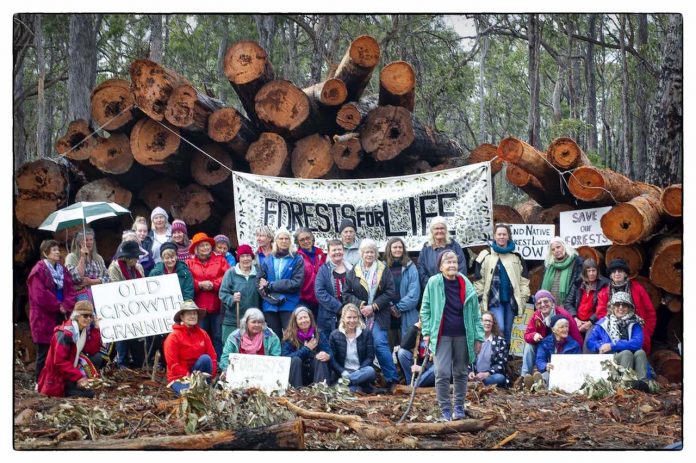Mainstream news these days sometimes feels like an episode from a dystopian movie. Then on 8 September came an announcement to make many spirits soar – an end to logging in our native forests.
Convener of the Western Australian Forest Alliance, Jess Beckerling, posted ‘Today we made history. Western Australia will become the first state in the country to finally, after all these decades, stop the logging of our precious native forests and see them protected for their climate, biodiversity, water and cultural values’.
What the announcement means is an end to logging native forests from 2024, preserving at least an additional 400,000 hectares of karri, jarrah and wandoo forests. About 9,000 hectares of high conservation-value karri will receive immediate protection, with other high value forest areas to be recommended for national park status. WA Environment and Climate Action Minister Amber-Jade Sanderson, said that this will not only ensure this important asset can be enjoyed for its beauty, Aboriginal cultural heritage and ecotourism for years to come, but it is an important step in the fight against climate change.
“WA’s South-West native forests are storing approximately 600 million tonnes of carbon dioxide equivalent, or roughly 116 years’ worth of annual emissions for every car in Western Australia,” she said.
As one of the Nannas for Native Forests, I know just how deep the feeling of relief runs for the conservationists who have fought for this outcome for many years. Joining a forest vigil in the early hours of the morning, and watching the dawn reveal a small mountain of felled logs and a crushed landscape, was an emotional kick in the guts. Most of those logs would end up as charcoal and woodchips.
“How could this be justified?” we kept asking.
Virtually none of the South West jarrah forest has escaped some degree of logging over the decades and there are few signs of the iconic giant jarrahs that greeted early European settlers. When the big machinery pulls out and the saws fall quiet, our unique forests will have a chance to recover.
Older trees will develop nesting hollows for cockatoos and owls. Seasonal blossom will attract bees and support the valuable honey industry. Small mammals and the myriad tiny organisms of the forest floor will turn over soils that were compacted by giant tyres and restore the living assemblages that nurture the life of the forest. Some of the scars will heal.
The forests may never regain the grandeur described in accounts from the first settlers but without the huge disturbance of logging, and with sensitive fire management to promote biodiversity (that’s another story), they will have the best chance of adapting to changing conditions of reduced rainfall and lower groundwater levels. They will shelter wildlife, lock up carbon in their timber and do their bit to help us to secure a safe climate.
This announcement isn’t the end of the journey. There are still two years to go until adoption of the new Forest Management Plan. Bauxite mining and fire remain a threat. But it is a huge step in the right direction and reason to reflect on what can happen when government opens its doors and listens to the facts and the wishes of the people.
Nearly two million hectares of native forests will be protected for future generations. This comes with investment in softwood timber plantations and a transition plan to support workers, businesses and communities in the South West with links to the forestry industry.
We are often all too ready to criticise when we disagree with government decisions, so I want to say “thank you” to Premier Mark McGowan for this one. You’ve given us some much-needed good news.



































